Aerospace
10 fastest fighter jets in the world.
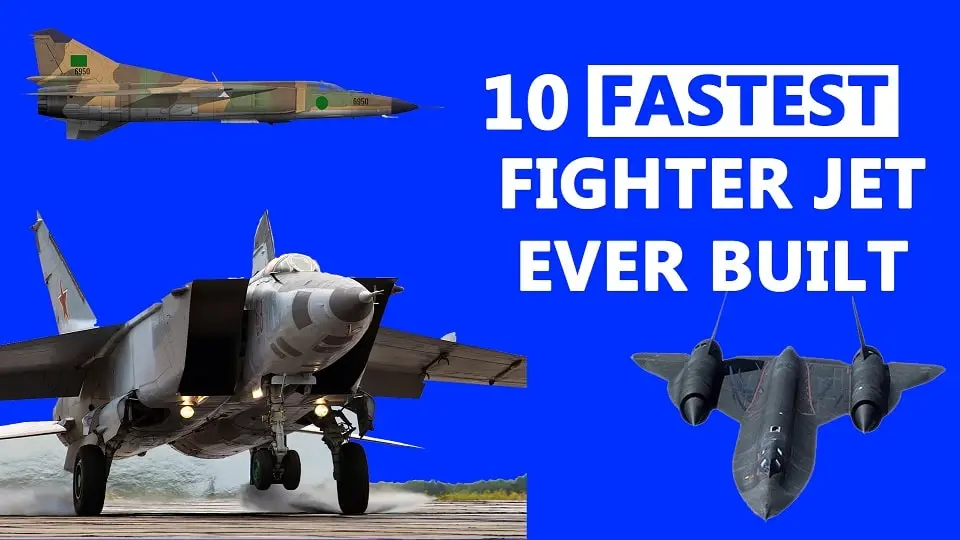
In the exciting field of military aircraft, speed and agility are essential for gaining an advantage in combat scenarios. Nations invest considerably in building cutting-edge fighter jets capable of reaching tremendous speeds and outmaneuvering adversaries as demand for cutting-edge technology and unrivaled performance develops.
The Russia’s 5 Most Dangerous Fighter Planes ever built.(Opens in a new browser tab)
These fighter jets represent the peak of human achievement in aeronautics, from the famous supersonic giants that have long dominated the skies to the most recent stealth marvels that remain hidden from radar. We explore their ground-breaking features, cutting-edge propulsion systems, and the amazing abilities that have assisted them in place among the fastest and most powerful airborne aircraft ever made. In this article, we give a fascinating list of the world’s ten fastest fighter jets, demonstrating the highest level of aerospace engineering and military prowess.
1.MiG-25 (Foxbat)
The Mikoyan-Gurevich MiG-25, also known as the Foxbat, is one of the fastest fighter jets in the world. It was developed by the Soviet Union during the Cold War era and first flew in 1964. The MiG-25’s top speed has been estimated to be between Mach 2.83 and Mach 3.2, depending on the variant. Due to its incredible speed, it was able to achieve altitudes and velocities that were unrivaled during its operation. It achieved this amazing speed through its powerful engines and sleek design.
2. Lockheed SR-71 Blackbird:
The SR-71 Blackbird was developed by Lockheed’s Skunk Works division and first flew in 1964. It is the fastest aircraft ever produced and operated by the United States Air Force. The aircraft’s peak speed is expected to be around Mach 3.3, which is more than three times the speed of sound. The SR-71 could readily fly at altitudes of 25,000 meters, making it ideal for reconnaissance from a safe distance. As of 2023, the SR-71 holds the world record, which it set in 1976, as the fastest air-breathing manned aircraft, previously held by the related Lockheed YF-12.
3. Mikoyan MiG-31
The Mikoyan MiG-31, also known as the MiG-31 Foxhound, is one of the world’s fastest fighter jets. The MiG-31 is a Soviet and Russian supersonic interceptor aircraft that was developed in the 1970s and first flew in 1982. At high altitudes, the MiG-31’s peak speed is estimated to be Mach 2.83 (roughly 1,900 mph or 3,000 km/h). The MiG-31 was designed to be a replacement for the renowned MiG-25. The two aircraft perform similarly, with the exception that the MiG-31 has stronger sensors, electronics, and weapons.
4. Sukhoi Su-27 Flanker:
The Su-27 is a fourth-generation, twin-engine, air superiority fighter developed by the Soviet Union in the 1970s. It is known for its agility, long-range capabilities, and impressive dogfighting capabilities. The top speed of the Sukhoi Su-27 is around Mach 2.35 (approximately 1,600 mph or 2,500 km/h). As a supermanoeuvrable fighter aircraft, the Su-27 is intended to compete directly with the retired F-14 Tomcat and F-15 Eagle.
5. F-15 Eagle:
The F-15 Eagle is a twin-engine, all-weather tactical fighter aircraft built for the United States Air Force by McDonnell Douglas (now part of Boeing). It was initially used in 1976 and is now widely utilized in many nations throughout the world. At high altitudes, the F-15 Eagle has a peak speed of about Mach 2.5 (about 1,650 mph or 2,665 km/h). Additionally, it is the sole fighter jet to have never lost an air-to-air battle while claiming more than 100 aerial victories. The F-15, now called the F-15EX, is still being produced even though the base aircraft is more than 50 years old.
6.Dassault Mirage 2000:
The Dassault Mirage 2000, which can reach an astonishing Mach 2.2, is the fastest French fighter jet. The Mirage 2000 is a single-engined, multirole fighter that was introduced in the 1980s and was created to take the place of the Mirage III. Its top speed is said to be around Mach 2.2, or around 2,336 km/h (1,452 mph).
7. Chengdu J-10:
The Chengdu J-10, also referred as the “Vigorous Dragon,” is a multi-role combat aircraft built in China. The J-10 had a reported top speed of near Mach 2 (approximately 2,470 km/h or 1,530 mph). The J-10, a direct rival to the MiG-29 and Su-27 as well as the F-15 and F-16, was first developed as a specialist fighter but eventually evolved into a multirole fighter capable of ground attack as well as air-to-air combat.
8.F-22 Raptor:
The F-22 Raptor is a fifth-generation stealth air superiority fighter aircraft developed by Lockheed Martin for the United States Air Force (USAF). It was designed to be highly maneuverable, stealthy, and equipped with advanced avionics and radar systems. Its Top speed is Mach 2.25 or around (2,414 km / 1,500 mph).
9. MIG-29:
The MiG-29, which was developed in the Soviet Union as a lighter alternative to the Sukhoi Su-27 and the F-16, has been widely exported and is currently in the arsenal of many nations. Despite frequently being referred to as an F-16 rival, the MiG-29 was primarily used as a point-defense interceptor. And it has a Top speed of Mach 2.3 (2,450 km/h / 1,520 mph).
10.Sukhoi Su-57
The Sukhoi Su-57 is a fifth-generation multirole stealth fighter which was developed in the late 2000s to eventually replace the MiG-29 and Su-27. Although both the MiG-29 and the Su-27 have better top speeds, the Su-57 is significantly more technologically advanced, with a top speed of Mach 2 or roughly 1,327 mph (2,135 km/h).

Aerospace
Boeing Transfers Rocket Stage to NASA, Paving Way for Human Moon Mission
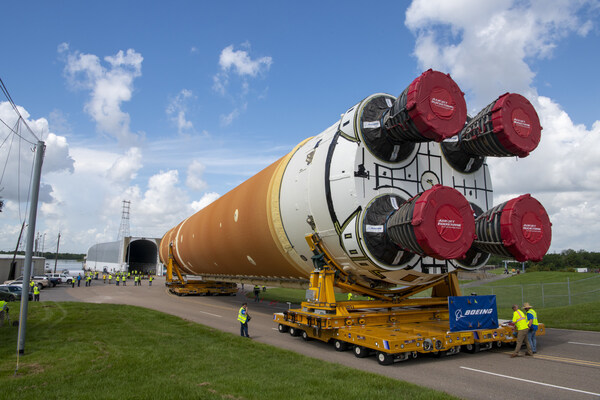
Boeing has achieved a significant milestone by providing NASA with the second core stage of the Space Launch System (SLS) rocket.
This crucial component, crafted at NASA’s Michoud Assembly Facility (MAF), is set to propel the Artemis II crew into lunar orbit, marking humanity’s return to deep space after a 50-year hiatus.
The monumental Boeing-built rocket stage, the largest element of the Artemis II mission, will embark on a journey aboard the Pegasus barge, traveling 900 miles to NASA’s Kennedy Space Center.
Comparison of two legendary aircraft B777x vs B747 aircraft:Click here
Upon arrival, it will be meticulously integrated with other essential Artemis II components, including the upper stage, solid rocket boosters, and NASA’s Orion spacecraft within the iconic Vehicle Assembly Building. This intricate integration process is a vital step toward the eagerly anticipated Artemis II launch, slated for 2025.
“Boeing-built products helped land humankind on the moon in 1969, and we’re proud to continue that legacy through the Artemis generation,” remarked Dave Dutcher, vice president and program manager for Boeing’s SLS program. “Together, with NASA and our industry partners and suppliers, we are building the world’s most capable rocket and paving the way to deep space through America’s rocket factory in New Orleans.”
NASA, Lockheed Martin Reveal X-59 Quiet Supersonic Aircraft:Click here
The delivery of Core Stage 2 marks a significant achievement in the evolution of the SLS rocket. Towering over 200 feet and powered by four RS-25 engines, this core stage, coupled with two solid-fueled booster rockets, will generate a staggering 8.8 million pounds of thrust. This immense power is crucial to launching Artemis II and future missions into the vast expanse of space.
The SLS rocket stands unparalleled in its capability to transport both crew and substantial cargo to the moon and beyond in a single launch. Its extraordinary capacity will facilitate the delivery of human-rated spacecraft, habitats, and scientific missions to destinations including the moon and Mars, ushering in a new era of space exploration.
-
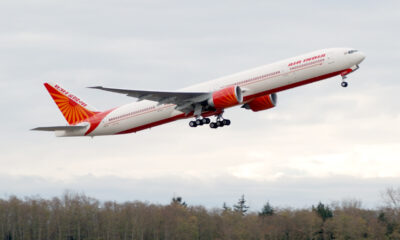
 Travel1 week ago
Travel1 week agoAir India to Expand US Operations with Three New Routes After a Decade
-

 Travel2 weeks ago
Travel2 weeks agoWhy We Should Avoid These Stamps in a Passport
-
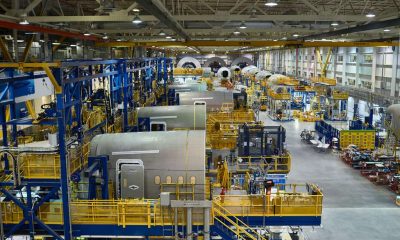
 Airlines1 month ago
Airlines1 month agoInvestigations Reveal Fake Chinese Titanium in Boeing and Airbus Jets
-

 Tech4 weeks ago
Tech4 weeks agoChina’s CATL Plans 1,800-Mile Electric Plane Launch by 2027
-
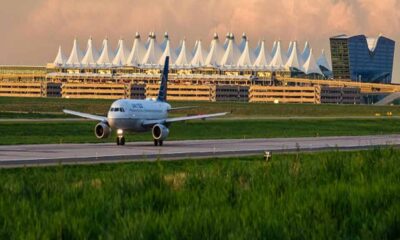
 Airport3 days ago
Airport3 days agoTop 10 Largest Airports in the World by Size
-
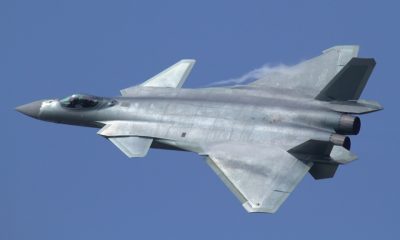
 Aerospace4 weeks ago
Aerospace4 weeks agoChina’s Fighter Jets Turn Wings into Autonomous Drones
-

 Airlines4 days ago
Airlines4 days agoAir India Rolls Out A350s for Delhi-New York JFK and Newark Routes
-
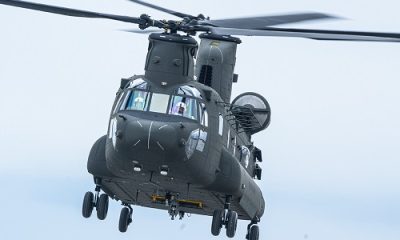
 Defence3 weeks ago
Defence3 weeks agoBoeing Enhances Chinook with New Engines and Block II Upgrades at $96 Million







